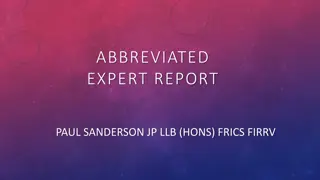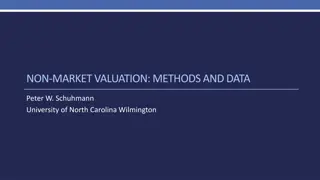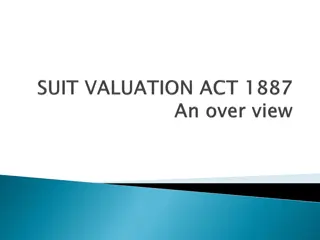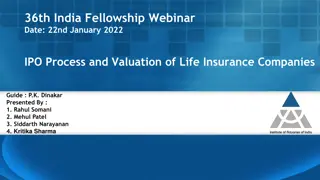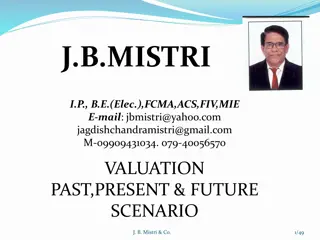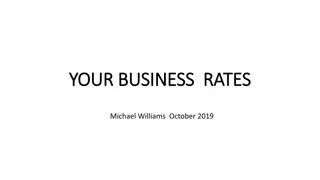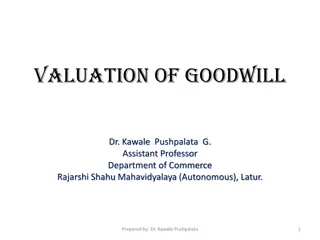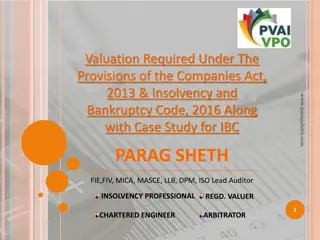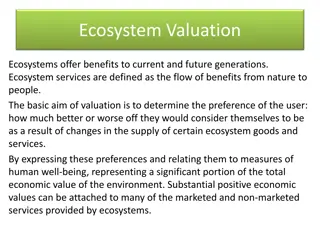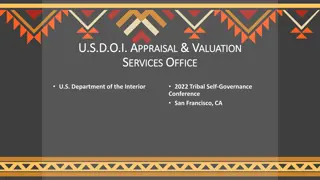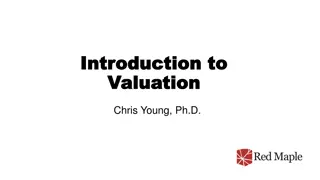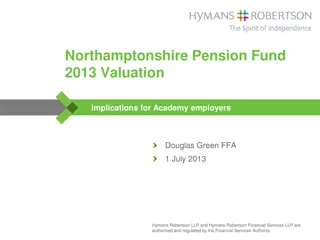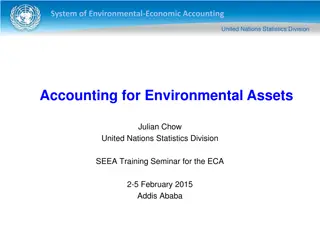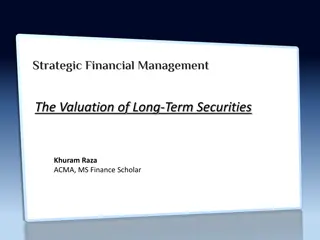
ABV as a Proxy for Detailed Valuation: Insights and Considerations
Discover the suitability of Asset-Based Valuation (ABV) as a proxy for detailed valuation, exploring its approach, considerations, and practical applications in assessing securities. Learn how ABV relates to balance sheet components and the impact of intangibles, investments, and financial obligations on valuation accuracy.
Download Presentation

Please find below an Image/Link to download the presentation.
The content on the website is provided AS IS for your information and personal use only. It may not be sold, licensed, or shared on other websites without obtaining consent from the author. If you encounter any issues during the download, it is possible that the publisher has removed the file from their server.
You are allowed to download the files provided on this website for personal or commercial use, subject to the condition that they are used lawfully. All files are the property of their respective owners.
The content on the website is provided AS IS for your information and personal use only. It may not be sold, licensed, or shared on other websites without obtaining consent from the author.
E N D
Presentation Transcript
Valuation Valuation - - 01 01
Topics to be covered Is doing a valuation essential? Can ABV (asset-based valuation) be a good proxy for a detailed valuation? Features of a good valuation technique Valuation dimensions
Can ABV (asset-based valuation) be a good proxy for a detailed valuation? ABV (asset based valuation) is a straightway approach to valuation. General rule: Buy a stock if MV is less than BV and sell or short-sell a stock if MV is more than BV. BV = Balance sheet based asset value balance sheet based value of liability So, provided that assets and liabilities of firm is represented at its fair value, ABV is a handy tool towards valuing a security and one can avoid detailed valuation
Can ABV (asset-based valuation) be a good proxy for a detailed valuation? (Continued) Cash & cash equivalents are represented at its fair value. Accounts receivables are at best at its quasi-equity value. PPE is represented in its carrying value, unless PPE numbers are revised. Inventory is represented at lower of the cost or market value. Intangibles are not a part of the Balance sheet. Short-term equity investments : classified as trading, held-to-maturity and available for sale. Among these equity investments, investments framed under trading and available for sale segments are it its fair value. Long-term strategic equity investments: Never reflected at its fair value. Short-term debt investments: classified as trading, held-to-maturity and available for sale. Among these debt investments, investments framed under trading and available for sale segments are it its fair value.
Can ABV (asset-based valuation) be a good proxy for a detailed valuation? (Continued) Long-term equity investment This is not represented at its fair value. But interest rates are regulated macro-economic variable. That is why book-value of these investments does not vary significantly from its market-value. Accounts payables are at best at its quasi-equity value. Other operating payables are defined through contracts and under a stable interest rate regime book value of these payables will not differ too much from the market value. Bond, debentures, bank loans Long-term financial obligations stemming from these sources are defined through contracts and under a stable interest rate regime book value of these obligations will not differ too much from the market value. Contingent claims Often these are not part of the balance sheet. But contingent claims can result in huge hidden dirty surpluses and income statement based losses in future.
Can ABV (asset-based valuation) be a good proxy for a detailed valuation? (Continued) So, asset side of the balance sheet is not generally reflected in its fair- value. There are intangibles which are not in fact part of the balance sheet. Quoted prices may not be the most fair price. Synergy and erosion should also be considered while implementing ABV. Focus should be on an asset s capability to churn utility not the price paid for acquiring the asset. So, ABV will not be a good proxy for a detailed valuation (exception applies).
Features of a good valuation technique A good valuation technique will use data in a parsimonious way. A good equity-analyst should opt out for a 5-data metrics led valuation template to a 15-data metrics led valuation template. A good valuation technique is verifiable. EPS forecast, target price are verifiable. Choices will get preference over conditions in a good valuation technique. It will work within a finite time-frame.
Valuation dimensions Asset based valuation model: Liquidation value, replacement value, adjusted book-value approaches. Discounted cash flow based valuation model: DDM, FCFF, FCFE, RE, AEG, REOI approaches. Relative valuation model: Equity value and enterprise value approaches. Contingent claim based model: Option to expand, option to abandon, option to defer etc. approaches

